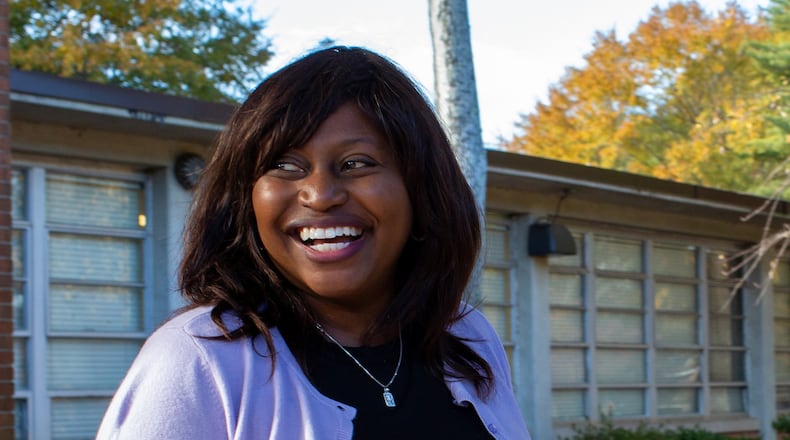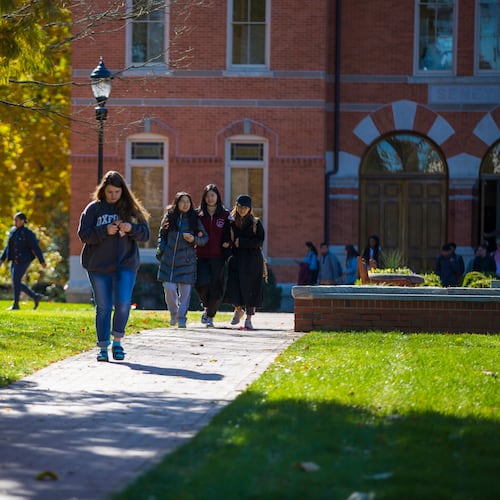DeKalb County’s Indian Creek Elementary School is among more than two dozen of the district’s schools currently holding more students than their buildings should.
The school’s 962 students — according to an October enrollment and capacity report — is 212 more than the 750 it was built to hold. Behind the school, portable classrooms pick up the slack.
And that’s OK, Principal Stephanie Brown-Bryant said recently.
Overcrowding has been blamed for declining student test scores and fewer personal connections between students and teachers. But for this school, the benefits students enjoy may far outweigh the negatives of being too full.
BB, as she's called in her building, has seen redistricting talks threaten to send students to schools where they would no longer be able to walk to a grandparent's home after school, or separate friends whose parents share the child-rearing load. The school is off Indian Creek Drive in Clarkston, a refugee resettlement base that welcomes hundreds of international residents annually. Keeping families closer to their resources is more of an imperative, Brown-Bryant said.
“Many of the redistricting options would have separated the communities,” she said. “You just make it work.”
Making it work has meant getting creative, restructuring classrooms so as to not go over mandated class-size limits, having several teachers utilize the same portable classroom in any given day, even holding classes in hallway “nooks” just out of the way of general traffic.
Twenty-seven of the DeKalb County School District’s 141 schools and programs, about 20 percent, are over capacity, despite the fact that the district’s buildings could serve a total of nearly 12,000 more students. Many of the district’s overcrowded schools are in the Dunwoody area, which is still seeing dramatic growth, and in the Cross Keys feeder schools, largely attended by international students and first-generation Americans.
The district’s population has fallen steadily over the past five years, and is expected to fall by several hundred students again this year.
The district expects to ease overcrowding through new construction and building additions paid for by the Education Special Purpose Local Option Sales Tax V program, and through redistricting and moving programs within the district.
But crowding isn’t the most distinctive feature setting teaching apart in Clarkston.
Because more than 700 of the students’ parents primarily speak other languages, the school has engaged them through translators, often sending robocalls in multiple languages. The school partners with refugee advocacy groups and local service groups and offers courses for parents to learn English.
Staffers help with cultural competency, helping others learn that some actions can have multiple meanings. For example, Parent Liaison Micheline Salama said, it is a sign of respect to not look someone in the eye in certain cultures.
“The school is good for everybody, including mom and dad,” parent Fatima Abdul Gafur, whose fifth-grader attends the school, said through a translator. “The staff is always glad to see me, the commute is convenient and the teachers here are incredible.”
The school has gotten a reputation in the Clarkston community for its inclusion efforts, as well as the lengths the staff go to educate and engage students and parents. Zulikha Yousif, who has a fifth grade student attending the school, said the parents in the area often help out each other by babysitting each others’ children, making sure they get home when another parent is at work.
“We are a community,” she said. “We come here with the comfort of knowing we will get service. Some friends who used to send their children here wish they could come back.”
Beyond the portable classrooms, space is being cleared for the new Indian Creek building, which will open in January 2021.
At dismissal one afternoon recently, Brown-Bryant stopped, smiled and surveyed the scene outside her school. Hundreds of students were running back and forth as she motioned them toward the sidewalk as buses and some cars drove through the parking lot picking up children. In less than a half hour, the students were mostly long gone. Some remained for after-school activities, put on through local partnerships with refugee advocacy groups.
For some, Indian Creek and what it offers have been the best part of acclimating to a new country with different rules and languages. Abdul Gafur’s fifth grade son has told her often he doesn’t want to graduate to a middle school. Indian Creek only goes to grade five.
“He said ‘Mom, I want to stay (at Indian Creek) again,’ ” Abdul Gafur said, through a translator. Then, she laughed.
Everyone understood that.
About the Author
Keep Reading
The Latest
Featured



